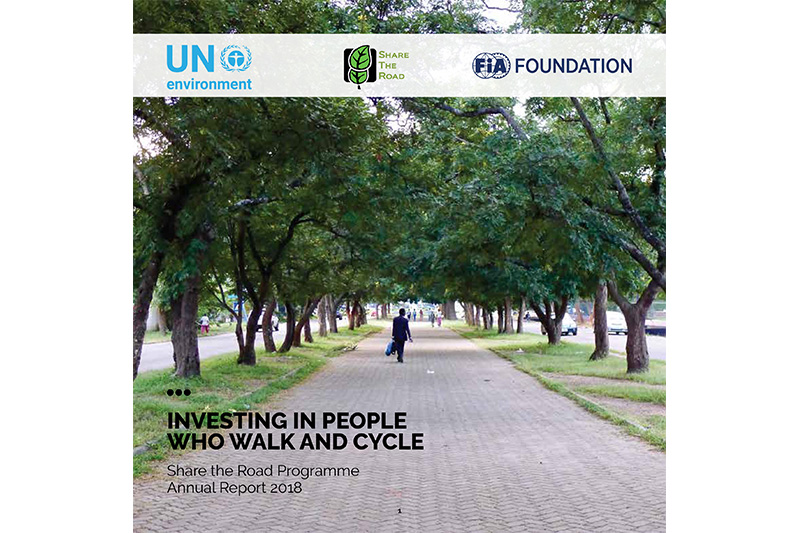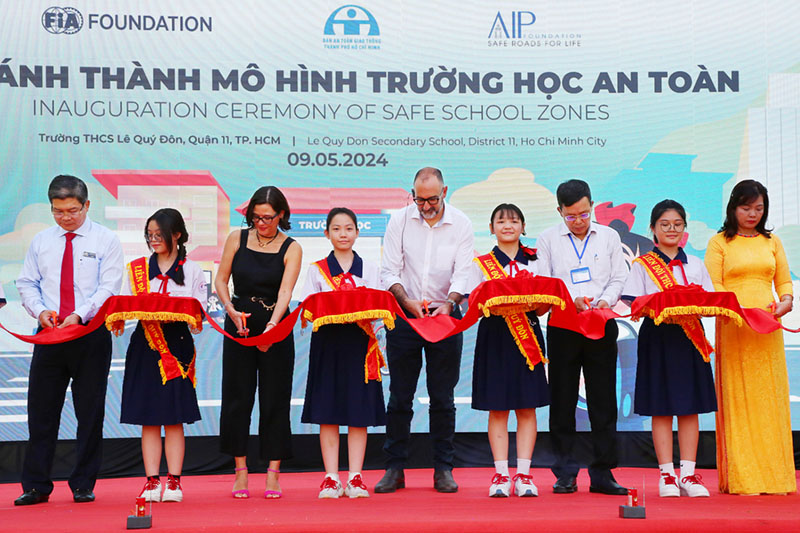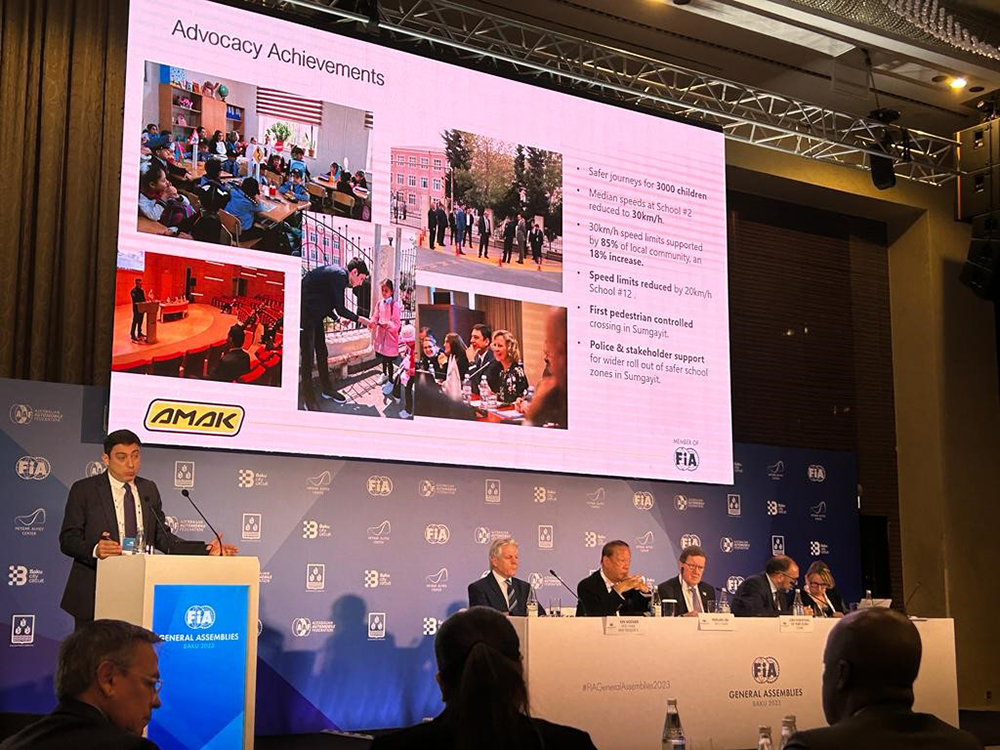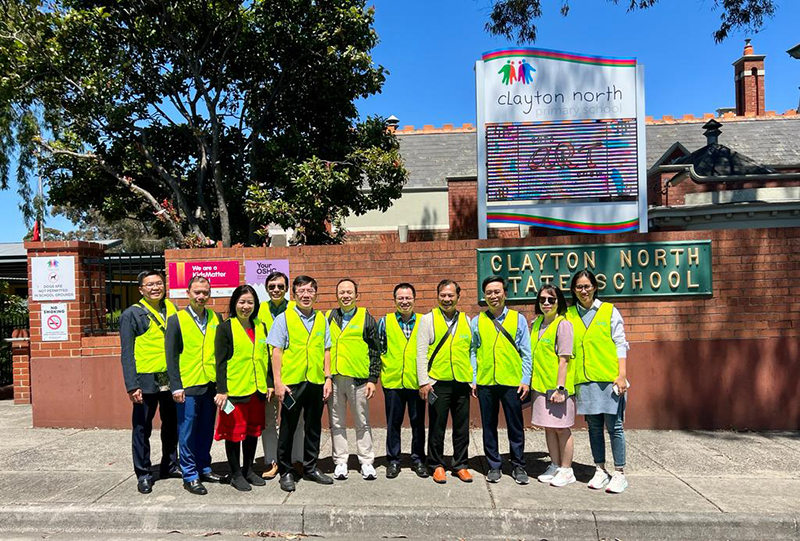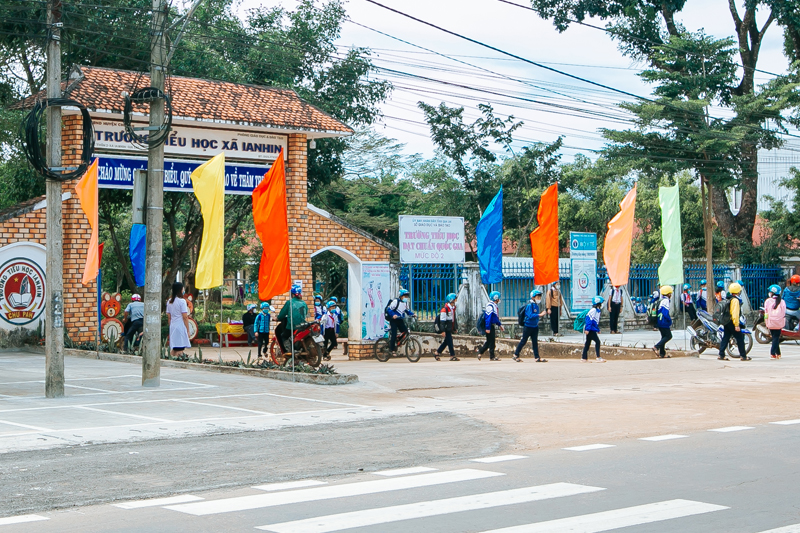New report shows UN Environment progress in helping cities to ‘share the road’
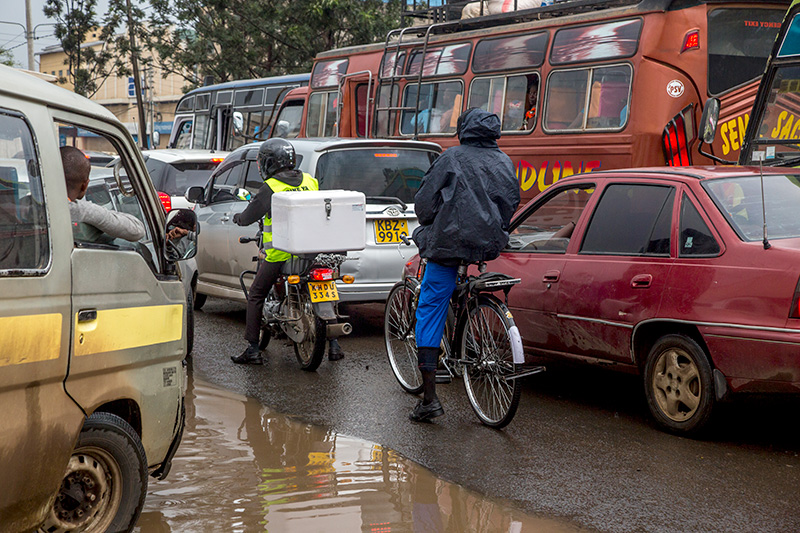
The Share the Road Initiative 2018 Annual Report, ‘Investing in people who walk and cycle’, highlights the growing interest from cities in Africa and Latin America for reallocating budgets and road space to enable safe and healthy walking and cycling. Share the Road is an initiative of UN Environment, in partnership with the FIA Foundation.
UN Environment is urging governments in developing countries to invest in pedestrians and cyclists, as this can save lives, help protect the environment, improve air quality and support poverty reduction. Meeting the needs of pedestrians and cyclists continues to be a critical part of the mobility solution for helping cities decouple population growth from increased emissions, and to improve air quality and road safety. Safe, convenient, inclusive transport infrastructure will help people move away from cars to healthier modes of transport.
“As a child growing up in São Paulo, Brazil, I remember walking to school every day with my friends, and back home again. Road traffic injury is now the leading cause of death for children and young adults aged 5-29 years; it is heartbreaking to know that thousands of children around the world die, making that same journey that I used to,” said Lucas di Grassi, racing driver for Formula E and Clean Air Ambassador for UN Environment, who wrote the foreword for this year’s report.
“Once you bring in the number of deaths related to poor air quality the picture is even worse; 91 percent of the world's population is breathing unhealthy air. Long-term exposure to outdoor air pollution contributes to the deaths of over 4 million of people with strokes, heart attacks, lung disease and lung cancer causing many of them. Air pollution is now the fourth-highest cause of death worldwide, trailing smoking, high blood pressure and diet, with the majority of deaths recorded in poorer nations. These are not just statistics, these are real people dying every day. Our friends, mothers, fathers, siblings and our children. We all have a part to play in ending the death toll”, wrote Mr di Grassi.
The 2018 annual report showcases the work of Share the Road, spanning seven country projects and a host of global advocacy events and initiatives. The report also gives a platform for external authors to give their outlook on non-motorized transport-related issues. Progress includes:
- US $2 million allocation for walking and cycling provision by the city government in Nairobi for 2019, moving towards a stated goal of spending at least 20% of road construction budgets on non-motorised transport provision;
- A Mayoral roundtable in Kampala, where the Lord Mayor committed to supporting active mobility policies. A 3.5km non-motorised transport corridor is under construction in the Ugandan capital;
- Working with the Federal Government and the City of Lagos in Nigeria to develop non-motorised transport policies, currently under review;
- Non-motorised transport policies under development in Zambia and Ghana, where UNEP and ITDP Africa are advising the respective governments;
- Working with ITDP and the World Resources Institute in Brazil, and with WRI in Mexico, to support district and city authorities in developing non-motorised transport plans. In Brazil this included a specific focus on the needs of children (UNEP, WRI and ITDP are all partners in the Child Health Initiative);
- Launch of an Africa Toolkit for Child Health and Mobility, in partnership with ITDP Africa and the University of Cape Town, as contribution to the Child Health Initiative’s campaign for safe and healthy journeys to school. The toolkit, which highlights best practice examples and advice for the context of sub-Saharan Africa, can be accessed here https://www.childmobility.info/
Rob de Jong, Head of Air Quality & Mobility at UN Environment, said: “The mobility needs of people who walk and cycle – often the majority of citizens in a city – continue to be overlooked. Even though the benefits of investing in pedestrians and cyclists can save lives, help protect the environment and support poverty reduction. The UN Environment Emission gap report (2017) clearly states the world must urgently and dramatically increase its ambition to cut roughly a further quarter off predicted 2030 global greenhouse emissions and have any chance of minimizing dangerous climate change. Meeting the needs of people who walk and cycle continues to be a critical part of the mobility solution for helping cities de-couple population growth from increased emissions, and to improve air quality and road safety.”
